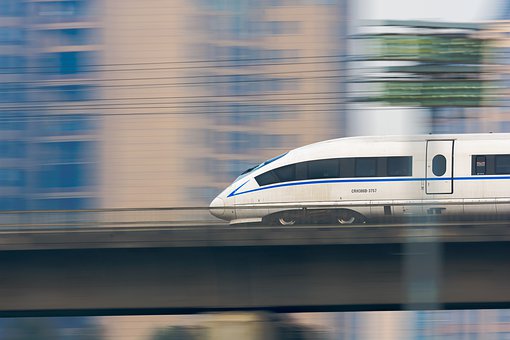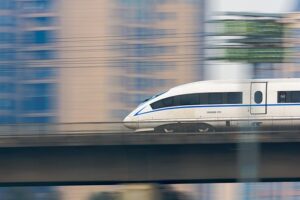Egypt will finally see the start of the 660-kilometer high-speed electric rail line that will connect the port cities of Ain Sokhna and Marsa Matrouh to Marsa Matrouh and Alexandria, respectively, building a rail link equivalent to the Suez Canal. The intended blueprint is to develop an ultra-modern 1800 km high-speed reliable rail network at an estimated cost of $23 billion. Not only would this reduce travel time, but it will also help to stimulate the economy, create jobs, and improve quality of life.
A $4.5 billion agreement was signed between the Egyptian National Authority for Tunnels and an alliance of companies which includes Orascom Construction S A E, The Arab Contractors, and Siemens Mobility, with a market capitalization of $3 billion. A memorandum of understanding has been signed earlier in September this year, in the presence of the Egyptian prime minister and Minister for Transport. The Egyptian nation has a vast network of rails reaching up to about 5000 km across its borders, connecting key cities and towns in a loop since the 1850s. However, because of a lack of significant expenditures in the deteriorating industry, these systems have become outmoded and antiquated, resulting in an increase in fatal incidents and accidents.
A comprehensive overhaul has been identified and deemed necessary, as the government has intensified its efforts to modernize and expand its road and rail network in recent years, including the ambitious Suez Canal project. In 2018, the Egyptian Railway Authority agreed to a $20 million deal with Russian-Hungarian Transmashholding industrial group to deliver standard passenger carriages. In 2020, 33 passenger carriages were delivered to the Egyptian nation with a further 175 carriages scheduled for delivery by the end of 2021, finalizing the total number provided to 1,300 in five different models.
An extensive railing system which will comprise the integration of an electrified high-speed train, backed by power substations providing a constant supply of reliable and efficient energy, as well as safety and security systems to enhance user experience. German-based company, Siemens mobility is responsible for delivering their brand Velaro high-speed trains, which are the fastest trains around the globe, as well as the Desiro high-capacity regional multiple unit (EMU) train set, and Vectron freight locomotives.
The company will look to provide a consistent and safe signaling system to prevent conflicting patterns, up-to-date interlocking technology, and a Level 2 European Train Control System. Track works, telecommunication systems, design, installation, commission, and maintenance of the systems for 15 years, that would be vital turnkey operations engaged by the consortium. Meanwhile, local constructors will undertake sub-construction and the building of bridges.
The $4.5 billion infrastructural project is categorized into 4 phases, with the 660 km first scheduled to slash across Ain Sokhna to El Alamein on the Mediterranean coast, running through the New Administrative Capital of Egypt. Groundworks which include digging the mountains along Helwan and May 15th city found in Eastern Helwan to the Administrative Capital is under operation, where involved organizations have employed explosives in leveling mounds on the track path.
The second phase will aim to link Alexandria, the Red Sea’s main port to the Port of Matrouh Gargoub whiles the third phase will link the resort city of Hurghada 40 km on the coast of the Red Sea, and Port Safaga to Qena and Luxor. Finally, the fourth phase will connect the Six October City with Luxor-Aswan. The first phase of the project is expected to be completed and fully functional by the year 2023, in about 24 months after commencement of construction. The Egyptian nation is apparently willing to invest heavily towards the completion of all 1800 km electric rail networks and will seek to finalize a compromise on the rail network and infrastructure, trains, and maintenance in the near future.
The entire project is an appreciated initiative that will significantly transcend the Egyptian rail and transportation systems, enhancing the nation’s reputation as a regional and continental leader in transports. In contemporary times, it is vital that onward developmental projects consider the environment as well as prove sustainable. Being a fully electrified system, elemental energy sources such as coal and fossils are avoided, thereby allaying carbon emissions by 70%, in contrast to current transport mediums, which contribute majorly to these emissions. The high-speed rail will cushion the environment whiles promoting improved quality of life.
The strategic development of the infrastructure will be propitious for Egyptian communities as the alliance will reward over 15,000 direct jobs, and 3,800 indirect jobs, with the tendency to avail more vacancies as the construction and operation of other phases commence. Siemens Mobility is keen to provide valuable technical training to improve domestic qualification, which will aid in imparting vital skills necessary for the task.
With the capacity to convey over 30 million people per year, the electric train will cut down travel time by 50% and eventually spike the productivity of the nation’s workforce. The impact of satellite towns and an influx of Cairo’s population to about 20 million people today results in congestions in and around the cities. The high-speed rail provides a tenable solution that is both comfortable, affordable, and efficient. Freight transportation, particularly the total inland freight moved via rail will be augmented by 15% representing an overall hike in freight transport efficiency.












